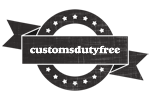Peru is a country in South America. It has a coastline on the Pacific Ocean and is bordered by Bolivia, Brazil, Chile, Colombia, and Ecuador. The Andes Mountains run parallel to the Pacific Ocean. Many Peruvian rivers originate in the peaks, and eastern lowlands contain tropical forests which are part of the Amazon basin. The government system is a constitutional republic; the chief of state and the head of government is the president. Peru has a mixed economic system which includes a variety of private freedom, combined with centralized economic planning and government regulation. Peru is a member of the Andean Community (ANCOM), the Asia-Pacific Economic Cooperation (APEC), and the Trans-Pacific PartnershipA business which is owned by two or more people, all sharing... (TPP).
Peruvian economic performance has been tied to exports, which provide hard currency to financeTo provide or obtain funds for a business, commercial projec... imports and external debtAlso known as Foreign Debt. Money that is owed by the govern... payments. Peru’s main exports are copper, gold, zinc, textiles, chemicals, pharmaceuticals, manufactures, machinery, services and fish meal; its major tradeThe buying and selling or exchange of goods and services. Th... partners are the United States, China, Brazil, European UnionEU. Previously called the European Community. An internation... and Chile. Although exports have provided substantial revenue, self-sustained growth and a more egalitarianBelieving that everyone is equal and should all have the sam... distribution of income have proven elusive. Services account for 43% of Peruvian gross domestic productCommonly abbreviated to GDP, Gross Domestic Product is a ver..., followed by manufacturing (32.3%), extractive industries (15%), and taxes (9.7%). Recent economic growthAn increase in a region's or nation's production of goods an... has been fueled by macroeconomic stability, improved terms of tradeThe buying and selling or exchange of goods and services. Th..., and rising investmentMoney or capital that is invested in a business or in an acc... and consumption. China has become Peru’s largest trading partner following a free trade agreementAn agreement, usually between countries, to limit or change ... with the People´s Republic of China signed on April 28, 2009 additional free tradeThe buying and selling or exchange of goods and services. Th... agreements have being signed with the United States of America (2006) free trade agreementAn agreement, usually between countries, to limit or change ... with the United States signed on April 12, 2006, the European UnionEU. Previously called the European Community. An internation... June 26, 2012.The EU and Peru Sign TradeThe buying and selling or exchange of goods and services. Th... PromotionThe use of marketing and/or advertising to bring attention t... Agreement, with Japan free trade agreementAn agreement, usually between countries, to limit or change ... with the constitutional monarchy of Japan signed on May 31, 2011.
The Peruvian economyThe management of money, currency and trade of a nation. The... grew by an average of 5.6% from 2009-13 with a stable exchange rateAlso known as Foreign Exchange Rate. The rate, which can var... and low inflationNormally referring to the economy of a country, inflation is..., which in 2013 was just below the upper limit of the Central Bank target range of 1% to 3%. This growth was due partly to high international prices for Peru’s metals and minerals exports, which account for almost 60% of the country’s total exports. Growth slipped in 2014 and 2015, due to weaker world prices for these resources. Despite Peru’s strong macroeconomic performance, dependence on minerals and metals exports and imported foodstuffs makes the economyThe management of money, currency and trade of a nation. The... vulnerable to fluctuations in world prices.
Important Details
- Country ISO3 : PER
- Country Code : 604
- Income Group : Upper middle income
- Lending Category : IBRD
- Region : Latin America & Caribbean
- Currency Unit: Peruvian new sol
- WTO Member : Yes
- TradeThe buying and selling or exchange of goods and services. Th... organisations : WTO
- world rank : 49
- Regional Ranking : 9th in the South and Central America/Caribbean Region

